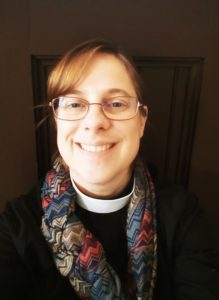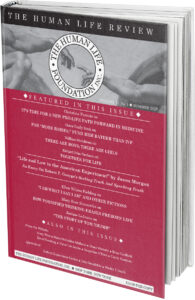Unfinished Writing
Spring, 2019:
I started off the day with a rather reluctant middle-school Sunday School class. The hour was early for them, and they had not yet fully realized their daily resurrection from the dead. At some point, in a moment of attitude (adult version, I can be almost as bad as the kids), I had chosen Jonah for our winter Bible reading because “he didn’t want to be here, either.” This Sunday, we began with the hapless prophet buried under the waves, swallowed up in the darkness of his mobile grave, and praising God. Jonah praised God from within the whale. Of course, the lesson was wholly lost on middle-schoolers, who have no comprehension of being in dark, enclosed, tomb-like places or what it is like when all hope is lost.
As it happened, I finished my Sunday in the similarly tomb-like undercroft of the same church. Built in 1850, the undercroft is not even remotely a useable space, and after over a year of worshiping and serving in this parish, I’d never been down there. It’s an archeologist’s dream and a claustrophobe’s nightmare. The storm-cellar doors screamed open and banged shut (thankfully after we were all out) with a dramatic finality. What lies below the uneven steps is a low ceiling, earth visible from almost two centuries of shifting and weathering, exposed brick and wood that left me uttering “woah” at every turn. What lies below is a history story. Here escaped slaves were hidden during the years of the underground railroad. Not just here, they found refuge all up and down the street. Here, desperate men and women descended into the darkness to bury an old life and emerge, God-willing, into freedom. Here they were entombed in order to rise.
So it is with the Good News of Jesus. The rarely observed liturgy of Tenebrae is quite vivid in this. When used, it is celebrated early in Holy Week, in the darkness, as one by one candles are extinguished, Psalms read, and darkness settles. Then, like that squeaky storm-cellar door, a loud crash of final closure pierces the darkness and the liturgy ends. This is the crashing closure of our graves, the crashing closure of the Garden Tomb in which our Savior lay, the crashing end of “this body of death.” (Romans 7:24)
Modern science tries to evade the crashing end with spa treatments and medications, many of which are wonderful in what they can do for us. None of which will do more, however, than prop the door open a bit longer. Others try to soften the closure, meet it on our own terms, ease down the door. Both approaches miss the point. Death is startling. It is supposed to be. To see Jesus on the Cross is to be appalled, startled speechless at the Suffering Servant. (Isaiah 52:15)
Spring 2020:
And that is where I left this little meditation on the Cross of Christ. Holy Week ramped up with all its busyness; then came Easter and its lively exuberance, and by then that meditation seemed to be irrelevant. I set it aside. Only now, in this somewhat limp and lifeless Easter season, do I stumble across it again. What a difference a year makes.
A year ago, the proclamation in Isaiah (repeated in Matthew) that “The people who walked in darkness have seen a great light; those who dwelt in a land of deep darkness, on them has light shone” (Isaiah 9:2), would have been fodder for a sermon on the light. This year, we still identify more with those who are sitting in the darkness. A year ago, Good Friday seemed a light momentary affliction on the way to Easter; this year it was a stark reminder of just how long the dying process takes, as our church’s three-hour vigil ticked away every slow minute in the fishbowl of social-media streaming. Preaching on the second Sunday in Easter any other year has meant a focus on the resurrection appearances of Jesus in the Upper Room. This year, I preached to a camera on the experience of sitting in a locked room, fearing an enemy outside.
This all made sense in Holy Week. The wonderful Exodus readings my family shared took on a new meaning, a long rest on the plague rather than skipping straight on to the Passover. Holy Week felt hollow and strange, but there was an identification with the situation—that first Holy Week probably felt hollow and strange in the extreme. But now it’s Easter and Christ is risen, and the doors are still locked for fear.
We skip that part, as a Church, all too often. We rush ahead, relieved to leave the foot of the Cross and eager to peer into the empty tomb. He’s not here; he is risen! And yet, there is an alien landscape between the Cross and the fullness of resurrection. A world of locked doors, fear, and confusion pervades the early days after Easter this year. The first witnesses of the Resurrection, being women in a world where women’s testimony counted as half that of a man, were seen as crazy, emotional, hysterical, and unreliable. The Gospel of Mark, in the earliest versions we have, ends abruptly with the words, “For they were afraid.” Frail women, in the faint light of morning, fleeing from the tomb, trembling, astonished, and saying nothing to anyone about what they had learned, because they were afraid. (Mk 16:8)
For those biblical scholars who like to argue such things, this is the “harder reading.” Why would Mark leave us with fear? Where is the Gospel, the good news, in that? The people who walked in darkness have seen a great light, but why does the darkness still remain? It seems that Mark rings down the curtain with a painful question.
Of course, we have been preaching to a settled Church for generations. We meet in comfort, without fear of persecution, and until recently without fear of suffering as a consequence of our coming together in worship. That was not Mark’s world. Mark wrote to a Church facing persecution, cultural shifts that would likely result in their experience of fear, suffering, trembling, and locked doors. Mark may not have been so eager as we are to skip to the good parts, to skip over the fear.
But I think Mark knows something that we did not know a year ago; there is no good news in seeing a great light until we understand what it means to sit in darkness. Jonah couldn’t preach until he’d sat in the belly of the whale. The mouth of the grave has to come crashing closed, before it can be opened. Christ may be risen, but for a while, the disciples still sit in locked rooms, afraid. It is not a sort of faithlessness, as last year we might have wanted to claim; rather, it’s simply part of our human condition.










